We get questions!
some late summer garden topics
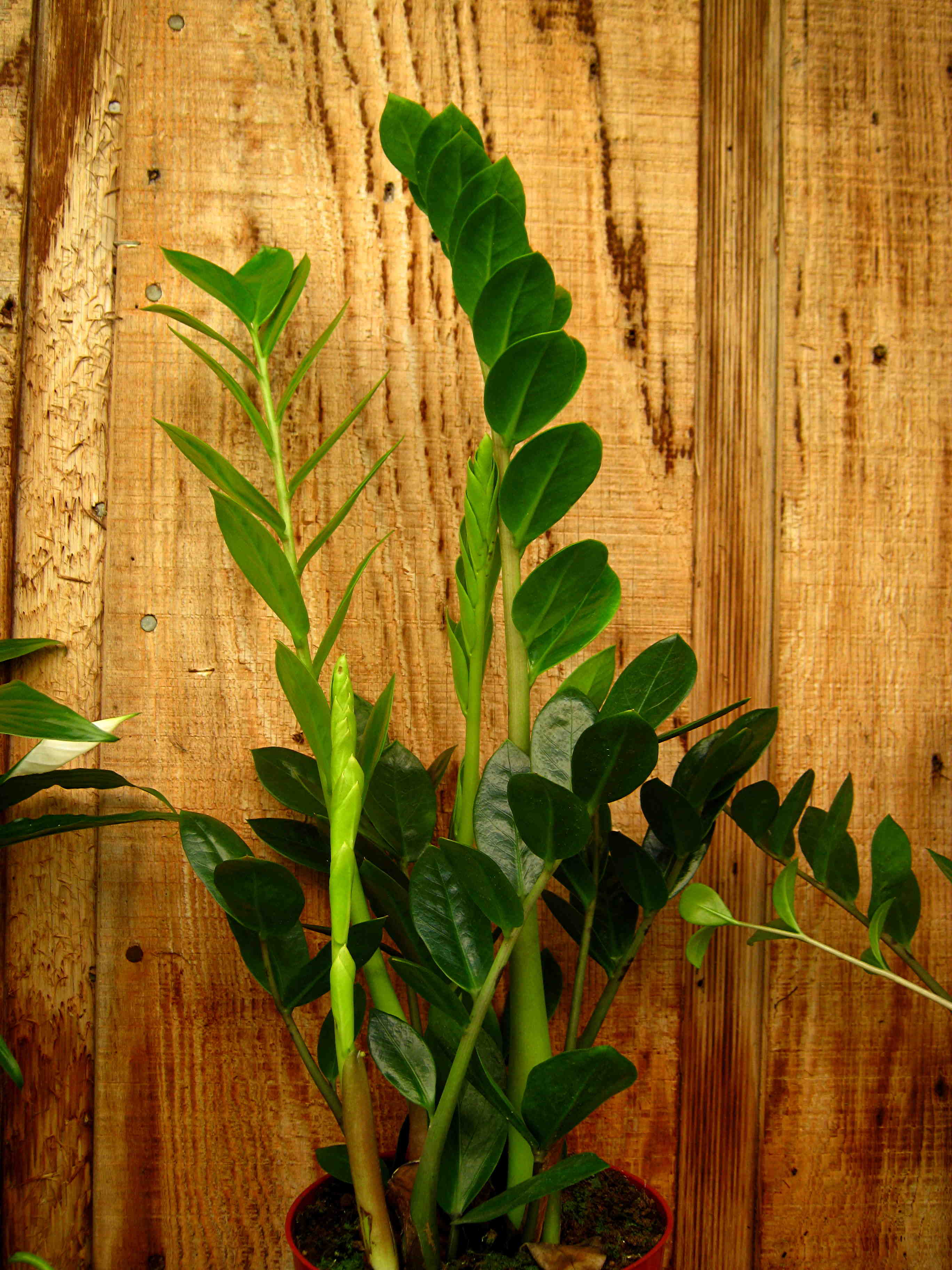
The name "Easy ZZ" comes from the initials of the botanical name: Zamioculcas zamiifolia. The plant has a large storage root, enabling it to go long periods between waterings. Also tolerant of low light, and pest-free.
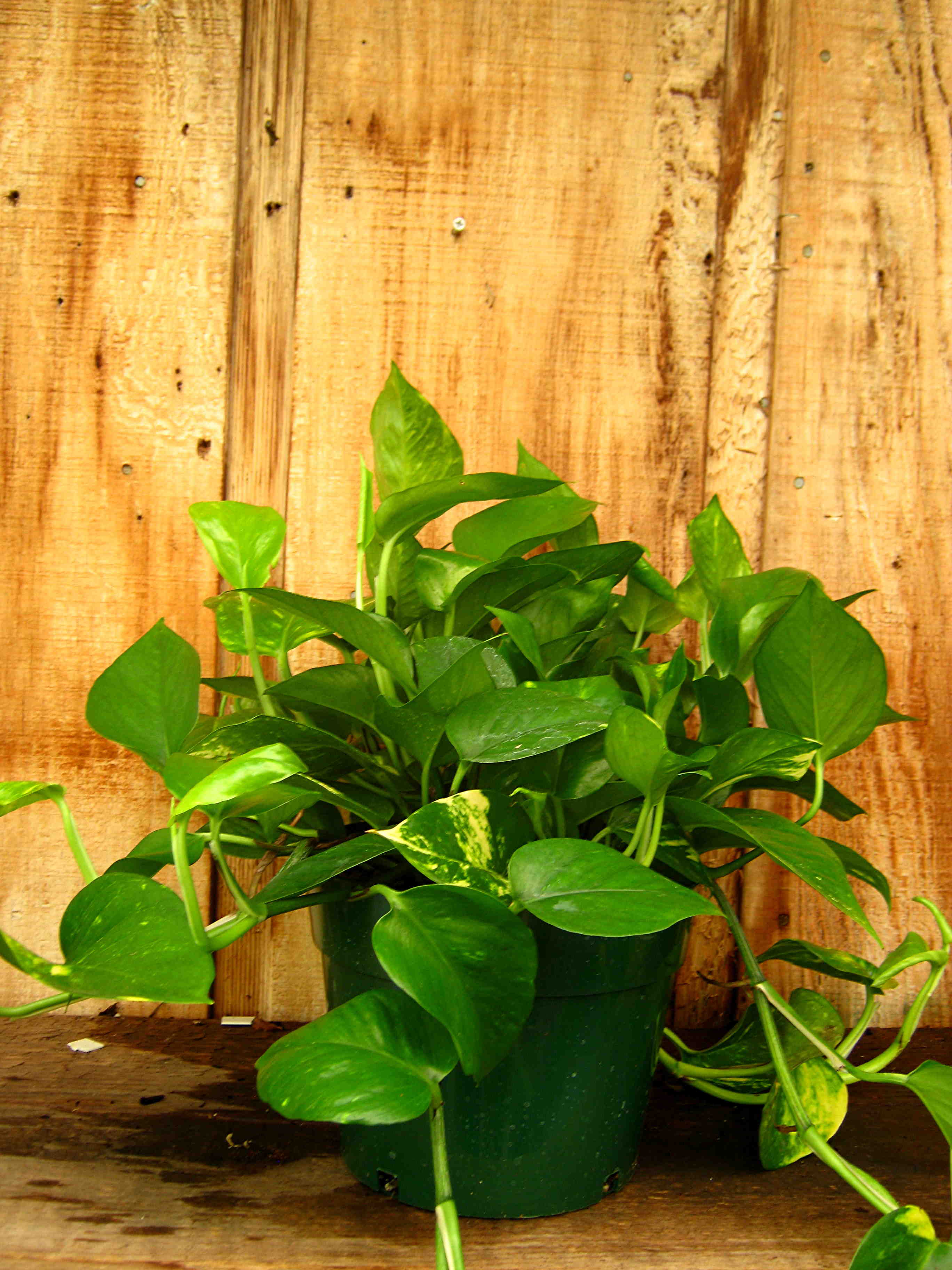 Golden pothos is one of the easiest houseplants you can grow. It tolerates low light, will recover from watering neglect, and gets no pest problems. It is a climbing vine, so it can be used to trail from a basket or along a bookshelf.
Golden pothos is one of the easiest houseplants you can grow. It tolerates low light, will recover from watering neglect, and gets no pest problems. It is a climbing vine, so it can be used to trail from a basket or along a bookshelf.
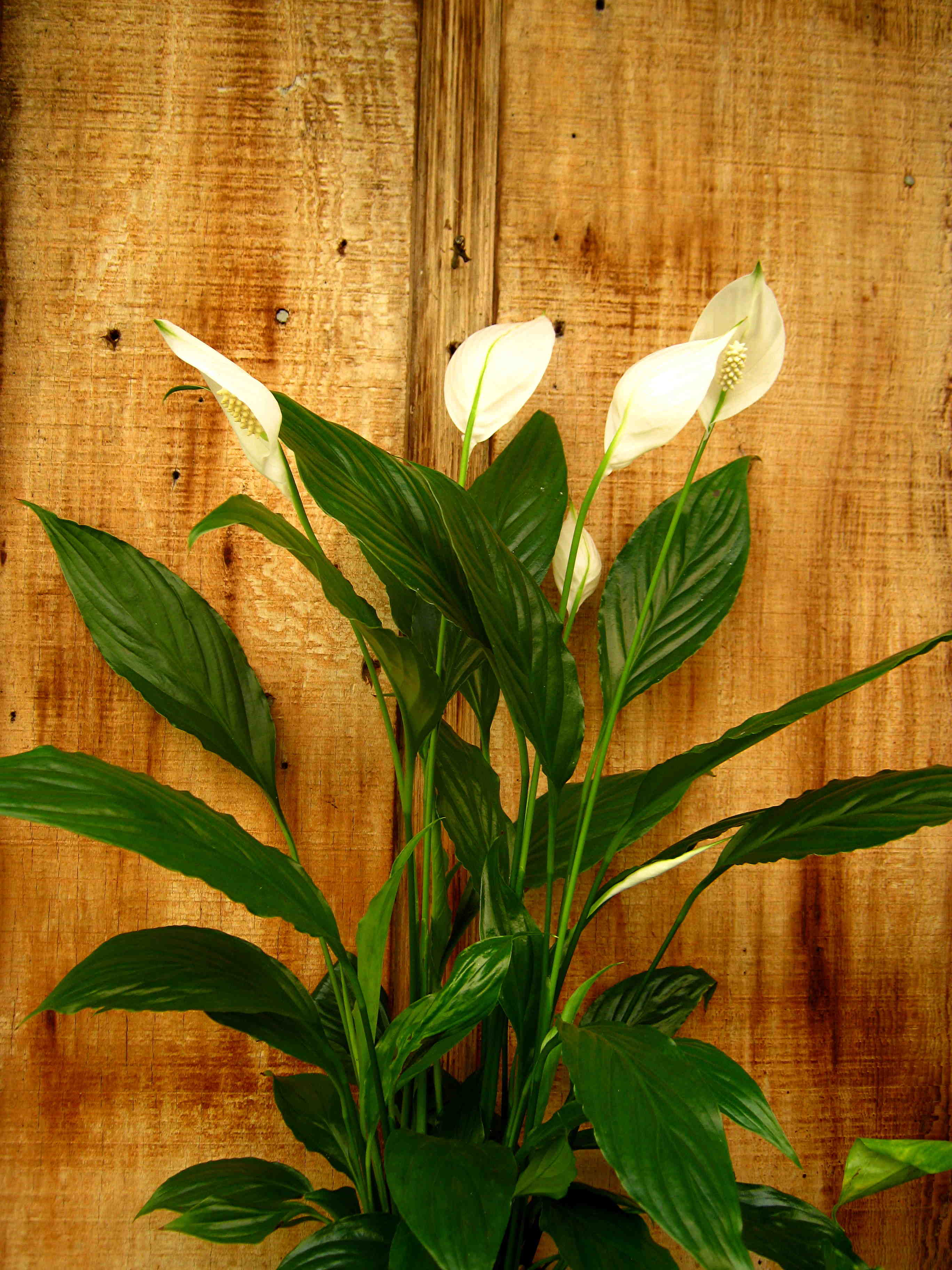 Peace lily, or Spathiphyllum, is another member of the philodendron family. One of the few houseplants with a showy flower. Reasonably tolerant of low light..
Peace lily, or Spathiphyllum, is another member of the philodendron family. One of the few houseplants with a showy flower. Reasonably tolerant of low light..
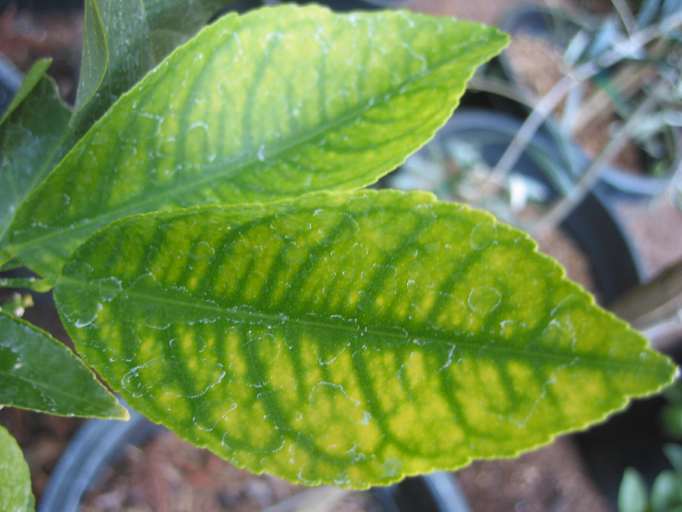 Citrus leaves often show iron chlorosis in Davis. Classic symptoms: the veins are green but the rest of the leaf is yellow. Our hard water and high pH cause the iron in the soil to be unavailable to the plant roots. Apply soil sulphur and fertilize regularly to keep the leaves green.
Citrus leaves often show iron chlorosis in Davis. Classic symptoms: the veins are green but the rest of the leaf is yellow. Our hard water and high pH cause the iron in the soil to be unavailable to the plant roots. Apply soil sulphur and fertilize regularly to keep the leaves green.
 Boron in our water causes cosmetic problems on some leaves. The boron passes through the roots and up into the leaves, eventually accumulating at levels that cause the edge of the leaf to blacken and die. Shown here are leaves of Arbutus unedo that have been burned by boron.
Boron in our water causes cosmetic problems on some leaves. The boron passes through the roots and up into the leaves, eventually accumulating at levels that cause the edge of the leaf to blacken and die. Shown here are leaves of Arbutus unedo that have been burned by boron.
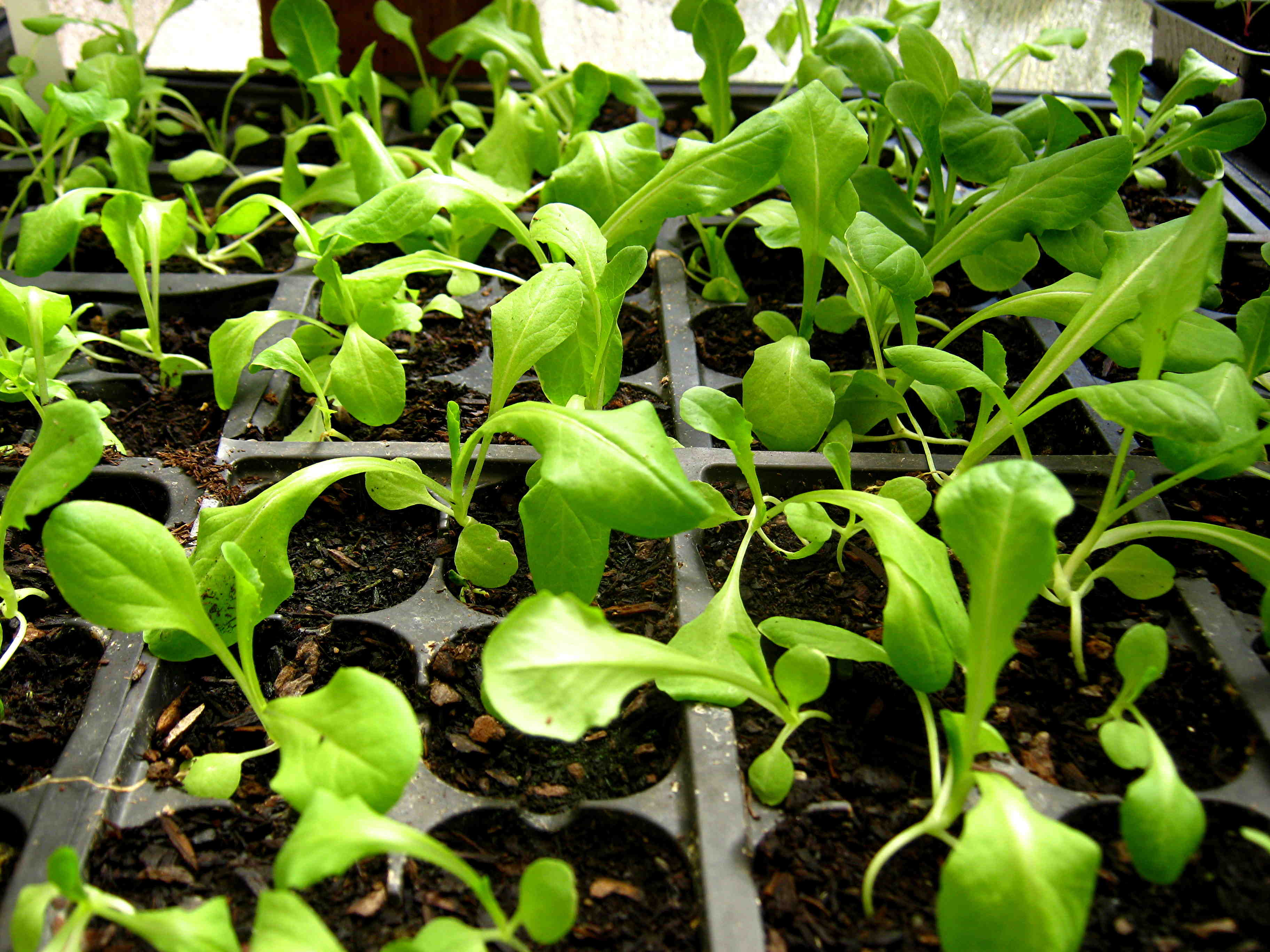 Lettuce seedlings in a greenhouse, nearly ready to go out for transplanting into the garden. Temperature in the greenhouse at the time this photo was taken: 110 degrees F. Days it took the seed to germinate: 5. Days to this stage of growth: 21.
Lettuce seedlings in a greenhouse, nearly ready to go out for transplanting into the garden. Temperature in the greenhouse at the time this photo was taken: 110 degrees F. Days it took the seed to germinate: 5. Days to this stage of growth: 21.
I just moved into the dorms. What are easy houseplants?
Welcome to Davis!
Here are the three easiest houseplants: golden pothos, easy ZZ plant, and peace lily (actually, pretty much anything in the philodendron family, which those are in). I also find croton tough and reliable.
I'm new to gardening here. Is there a list of the plants we can't grow in Davis because of the soil and water?
The problem for certain plants here is the pH (alkalinity) of the water; for some it is the high salt content. The soil is fine; just add organic amendment to heavier soils for some plants. Some plants grow, but require special fertilizers. Others simply look chronically anemic and get burnt leaf margins no matter what you do. Here are some of the best-known plants that don't like Davis water.
1. I've never seen a healthy one here:
Dogwood (Cornus florida)
Sour gum, Tupelo (Nyssa sylvatica)
2. Rarely do well:
Azaleas and Rhododendron
Pieris japonica
3. Ok if not irrigated; anemic if they are:
Pink Princess escallonia (Escallonia x 'Frades')
Sweet gum (Liquidambar styraciflua)
4. Benefit from regularly fertilizing, but can establish successfully with proper planting and early-life care. Apply soil sulfur liberally at the time of planting, and add extra "acid" fertilizer seasonally:
Blueberry
Camellia
Gardenia
Hydrangea, mop-head. (Hydrangea macrophylla; note that other species of Hydrangea are less fussy here, particularly H. quercifolia and H. paniculata).
Japanese maple (Acer palmatum)
Loropetalum chinensis
Magnolia species
Yesterday-today-tomorrow (Brunfelsia)
5. Citrus will get deficiencies of certain micronutrients if they aren't fed regularly. Iron, magnesium, and zinc deficiencies can cause leaf symptoms. Citrus fertilizers usually contain extra amounts of these nutrients, as well as extra sulfur to reduce pH.
Symptoms of root damage from watering too frequently can mimic the water-quality problems, because when the plant's fine root hairs are damaged they can't take up the nutrients. Water thoroughly and as infrequently as possible to flush out salts and avoid root damage.
Davis water has high boron content, and the boron often gets blamed for problems that are chiefly a result of the high pH. Natural borax deposits leach into our groundwater, but only a small number of plants show ill effects from that and the damage is mostly cosmetic. The common symptom is a burnt leaf margin on the older leaves of broad-leaf evergreens such as Strawberry tree (Arbutus unedo).
How do you control whiteflies? They are all over my vegetables!
With a very strong blast of water, each morning, for several days in a row.
Whitefly populations always build up on certain plants in the mid- to late-summer. The females oviposit (lay their eggs) in the morning, and won't lay their eggs on a wet leaf surface. A vigorous rinsing with the hose can drown some adults, and knock off and kill the larvae. Then the remaining eggs hatch and those larvae become vulnerable the next day.
I'm not talking about a little shower here. We don't just want clean whiteflies, we want dead whiteflies.
We use a nozzle that doubles the power of the water, and we wash the plants with an up-sweeping motion to scour off the undersides of the leaves. You will not harm the plant! Morning is best to allow the leaves to dry by the end of the day. This is fine for your vegetables, herbs, ornamental flowers, and landscape plants.
Vigorously washing plants is an effective pest control strategy for mites, aphids, and leafhoppers as well. It is more effective than most conventional and organic pesticides, if you are thorough and persistent, and it is not harmful to anything. Learn which plants are common hosts and resting plants for whiteflies, and get in the habit of brushing or shaking those as you walk by to monitor populations. When you see the adult flies flutter up, wash.
Note: dragonflies are very effective predators of whiteflies. If you have a water feature in your yard, you may find they provide natural control.
Here's a segment from the Davis Garden Show where Lois and I talk about whitefly control (mp3): Controlling whiteflies
Is it a good time to divide perennials? How about planting new ones?
Fall is a great time for dividing herbaceous perennials that have finished blooming. That fancy-sounding term refers to the soft (not woody) flowering plants that come back year after year, which increase to form larger and larger clumps. Some make bulb-like structures, others just get more growing points on short, spreading root systems.
You can dig up the whole clump, drop it gently on the ground a few times to loosen the roots, and then carefully tease apart new pieces. Once you have the knack for it, you will find some are much tougher plants and can be cut apart.
Examples: aster, bearded iris, chrysanthemum, Shasta daisy.
Is it ok to start winter vegetable seeds in hot weather? I'm seeing a lot of transplants in garden shops. Isn't it early? What do we plant now?
Many of the cool-season vegetables like an early start and high temperatures aren't a problem for the seedlings.
The plants we grow in fall, winter, and early spring can be grouped in these categories.
· Cole crops: broccoli, cabbage, cauliflower, collards, kale.
Brussels sprouts are in this category, but require a very long season (July planting gives best results).
· Leafy greens: gourmet greens (arugula, radicchio, etc.), lettuce, spinach, swiss chard.
· Stir-fry vegetables: mustard, pak choi, snow peas.
· Root vegetables: beets, carrots, kohlrabi, rutabagas, turnips.
· Legumes: peas, including snap, stringing, and snow peas; fava beans (also planted as a cover crop to build the soil).
· Onion family members are best planted in November: garlic (bulbs), onions (bareroot plants).
Most of the above can be planted anytime between August and February (we have a planting chart at our business web site. redwoodbarn.com). A few really need an early start for best results: Brussels sprouts, cauliflower , rutabagas.
You keep telling me that I don't have enough nitrogen in my vegetable garden, but I make and use my own compost!
The materials you put in your compost pile don't usually have much nitrogen in them. Plants need nitrogen to make and sustain new growth. If the older leaves are yellowing and the plants aren't growing well, and we've ruled out other causes (watering too often, root-attacking pathogens or pests), very likely you simply don't have enough nitrogen. It is the most commonly deficient plant nutrient.
You can add manure to your compost pile, or directly to the garden. You can use lawn clippings, assuming you haven't used any weed-control products on your lawn.
Cover crops in the legume family are very helpful. These are plants that crowd out weeds, grow deep roots to break up soil, and build nitrogen. Fava beans in particular pull nitrogen from the atmosphere (remember, the air you breathe is 70% nitrogen) and 'fix' it into a form plants can use. Clover and vetch are also easy to grow. All are planted in fall and winter. They can be seeded in parts of the garden you aren't using for vegetables, and then just tilled under in spring when you are ready to plant your summer vegetables.
Best of all is to add manure to your compost pile and your garden, add organic fertilizers to the garden each time you plant, and grow cover crops every winter. That builds more and more nitrogen in a benign form the plants will have available to them when they are ready for it.
You can, of course, also buy conventional fertilizers and apply those at the time of planting. They tend not to last as long in the soil, but act more quickly, and there is some evidence that they are harmful to beneficial soil organisms.
Fall is a great time to garden in the Sacramento Valley!
© 2012 Don Shor, Redwood Barn Nursery, Inc., 1607 Fifth Street, Davis, Ca 95616
www.redwoodbarn.com
Feel free to copy and distribute this article with attribution to this author.
Click here for Don's other Davis Enterprise articles
